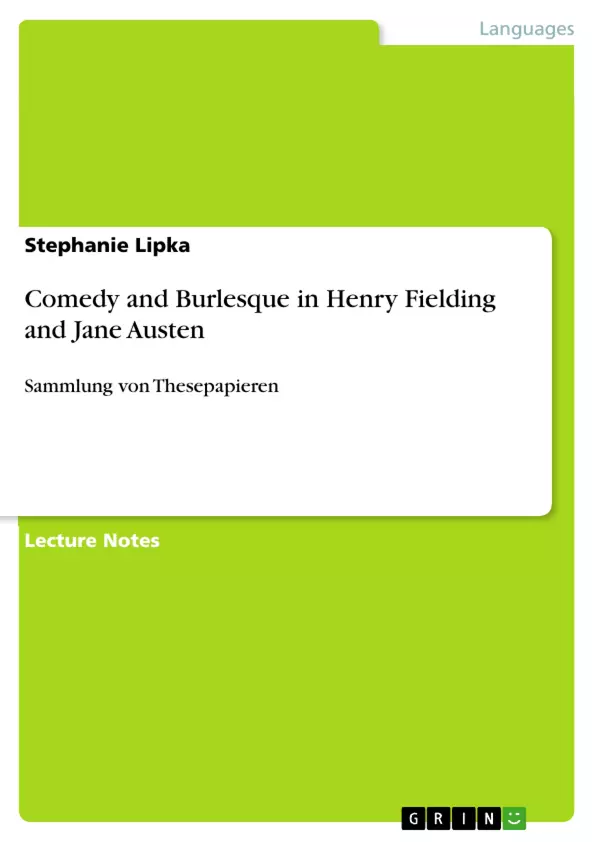Bei dieser Sammlung handelt es sich um Thesenpapiere des Hauptseminars "Comedy and Burlesque in Henry Fielding and Jane Austen", welche der Vorbereitung der Seminarsitzungen dienten.
Die thematischen Schwerpunkte der Ausarbeitungen liegen auf Religion, Liebe, Verstand, Vernunft und derber Unterhaltung. Im Mittelpunkt der Seminararbeit standen Henry Fieldings „Tom Jones“, sowie Jane Austens „Northanger Abbey“, „Sense and Sensibility“ und „Persuasion“. Zahlreiche interessante Aspekte werden analysiert und interpretiert.
Inhaltsverzeichnis (Table of Contents)
- Pamela vs Les Liaisons Dangereuses – minutes
- The Importance of Being Religious
- Ordinary People: Northanger Abbey
- Male Heroics and Female Dramatics: Sense and Sensibility
- Experience and Reflection: Sense and Sensibility
- Tom Jones: Journeys
- Farce and Material Culture: Fielding, Tom Jones
- Chercher l'auteur: the Presentation of Fictional Characters in Tom Jones
- Persuasion: Love
- Persuasion: Sense and Sensibility
Zielsetzung und Themenschwerpunkte (Objectives and Key Themes)
This seminar explores the use of comedy and burlesque in the works of Henry Fielding and Jane Austen. The seminar aims to analyze how these authors utilize humor and satire to critique societal norms, morality, and the human condition.
- Social Satire and Critique
- Morality and Religious Hypocrisy
- The Role of Gender and Class
- The Power of Narrative and Character Presentation
- The Influence of Literary Forms and Conventions
Zusammenfassung der Kapitel (Chapter Summaries)
The seminar begins with a discussion of the epistolary novel and its potential for social commentary, contrasting Richardson's Pamela with Laclos' Les Liaisons Dangereuses. The seminar then explores Fielding's Joseph Andrews, examining the interplay of religion, morality, and social hypocrisy through the lens of the novel's characters and narrative.
Schlüsselwörter (Keywords)
The seminar focuses on the use of comedy and burlesque in 18th-century English literature, examining themes of social satire, morality, and the portrayal of gender and class. Key authors studied include Henry Fielding and Jane Austen, with specific works such as Pamela, Joseph Andrews, Les Liaisons Dangereuses, Northanger Abbey, and Sense and Sensibility. The seminar also considers the influence of literary forms such as the epistolary novel and the role of character presentation in shaping the reader's understanding of the text.
- Quote paper
- Stephanie Lipka (Author), 2001, Comedy and Burlesque in Henry Fielding and Jane Austen, Munich, GRIN Verlag, https://www.grin.com/document/126072



